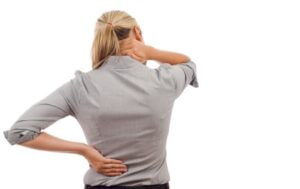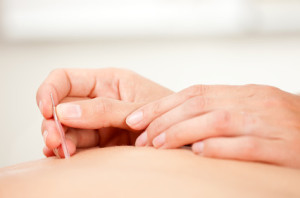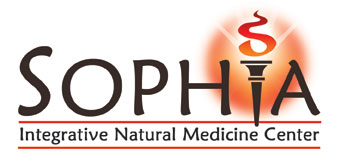Do you have back pain?
If so, you’re not the only one. Back pain affects a staggering 80% of the entire population. As you’re reading this right now, about 20-30% of the general population are experiencing back pain.
So, what do you think is the gold standard to treat pain?
The answer is pharmaceuticals (painkillers).
As many of us know, drugs only numb pain. Yes, the symptom(s) may be gone, but the underlying cause is still scratching at the surface.
With all brutal honesty, do you believe pain killers really fix anything?
With that question in mind, the purpose of this article is to effectively explain how to naturally prevent and relieve back pain…
The Four Steps To Healing
Please understand that when the muscles are overly tight, blood circulation won’t flow as well. Or even still, when the muscles are weak, the body will be susceptible to re-injury.
For this reason, when understanding the treatment and prevention of back pain, we need to consider the four steps to promote healing. In order to resolve pain fully (especially complex disk issues), there needs to be a comprehensive treatment approach.
Step one, you need to release tight muscle junctions (where the muscle originates in bone or tendon).
Second, one must mobilize fixated joints. Once the muscles are not pulling on the bone anatomy as much, it’s easier to create space between the joints.
Third, promote blood flow to and around the problem area (e.g. Disks). Bringing fresh oxygenated rich blood to the injured site will speed up the recovery period.
 Fourth, one must incorporate functional exercises such as Tai Chi, Yoga and Qi Gong to help strengthen and stabilize atrophied (weak) muscles.
Fourth, one must incorporate functional exercises such as Tai Chi, Yoga and Qi Gong to help strengthen and stabilize atrophied (weak) muscles.
Understand Your Pattern
When treating the back, it’s vital to differentiate between different patterns. Let’s quickly go over the basics:
Acute Pain: This occurs at the beginning stage of an injury. The symptoms include sharp pain, edema (swelling), inflammation, and redness.
Chronic Pain: This is seen when pain persists for three months or more.
Achy Pain: A lingering pain found over a general diffused area. The pain is often mild to moderate and notoriously quoted as a “dull ache.”
Sharp Pain: The location of the pain is common in one fixed area. Along with the sharp pain, one may experience shooting and electrical sensations.
The Yin & Yang of Back Pain
In general, the philosophy of Chinese Medicine states that the upper and lower back are of two different phenomena’s. Think of yin and yang as opposites. When we think of the back, the upper back area is considered Yang, while the lower back is known to be more yin. Why?
The reason is because if you palpate (feel) your entire back, you will notice the upper back tends to be a lot tighter than the lower back.
Right now, press the muscles along your upper and lower back. Don’t be shy, what do you feel?
With all of those mentioned, it’s vital to actively relax tight upper muscles and strengthen the lower back.
Get BACK To Your Health With Acupuncture
Regarding the treatment of pain, Acupuncture is used to enhance the propagation of blood and essential nutrients to the injured tissue structure(s).
Practitioners use tiny hair-thin pins along the body to activate the autonomic nervous system. This helps to release painkilling endorphins in ramping up the healing process.
For instance, upon palpation, when an area along the back is tense, Chinese Medicine eludes that to a stagnation. By promoting blood flow, the muscles will relax and the pain will diminish.
What Is Proper Posture?
Here are some quick guidelines to improve your posture.
-Sitting: keep head up and not tilted forward, sit with your legs slightly lower than your hips, and keep your shoulders back and relaxed.
-Standing: start by keeping your shoulders back and aligned. Engage your core muscles to keep your body straight.
-Walking: Keep your head parallel from the ground and don’t look down at your feet. Also, hit the ground with the heel first and then onto the toe.
-Sleeping: Support your lower back and knees by sliding a pillow between the legs, moderately stretch the body lightly before bed to ease muscles, and don’t sleep with a tall stack of pillows (this will cause an unnatural curvature in the spine).
Bend The Knees
Have you ever tried Martial Arts or Tai Qi before? If yes, you will quickly understand this tip. As a beginner of Martial Arts or Tai Qi, everyone start’s off learning the basic postures. Within these movements, the teacher always emphasizes one thing: to bend the knees. But, why?
Bending the knees is used to increase balance and helps root the person. More importantly, when the knees are bent, this takes off all the pressure from the hips. When the pressure is off, one is less susceptible to injuring their back. Try it!
Get up right now. Stand up and lock your knees straight. Feel the unnecessary pressure on the knees and hips. Now, slightly bend the knees and notice the difference.
Down the road, this simple tip will help not only prevent back pain, but also prevents hip and knee injuries.
Walk Backwards
If you thought the last tip was strange, you should read this! If you are an avid walker, try walking backwards for a couple minutes a day.
Walking backwards initiates muscles along the lower back (m. Quadrates Lumborum) in a way that normal walking could never do. This helps strengthen the muscles and triggers regions in the brain, which help improve coordination.
Stretch & Strengthen The Spine
Whether you have back issues or not, it’s vital to understand how to prevent pain. First and foremost, daily exercise is one of the best ways to use as a preventative measure. I am not talking about strenuous aerobics, rather a routine that encompasses strength, flexibility, and mindfulness.
Incorporating a fusion of both stretching exercises and strength training is the key.
Regarding back pain, strength exercises (especially the core) increase the body’s ability to hold and protect ligaments, tendons and bones together. While, stretching helps increase space and mobility in the area.
Learn How To Yawn Your Back Pain Away
Have you ever seen a cat yawn before? Everyone has! When cats yawn, they automatically go into a whole body spinal stretch.
Humans do this too. Yawning triggers specific involuntary areas in the brain, which in turn initiates a deeper stretch.
Practicing this every morning upon waking up will alleviate muscle tension and may help heal chronic back pain. Plus, it’s a great way to start off the morning!
Breath With Your Belly
Where does breathing come from? Most people believe the breath comes from the chest? However, when we breath with the upper chest only, we create unwarranted stress and chronic back tightness. For this reason, breath less from your chest, and more with the belly.
Conventionally, belly breathing is known today as diaphragmatic respiration. The main muscle of respiration (breathing) is the diaphragm (a sheet of skeletal muscle, which divides the thoracic and abdominal cavity).
This muscle moves up and down as you inhale and exhale. When you inhale, the diaphragm moves down and the intercostals lift up. When you exhale, the diaphragm moves up and the intercostals go back down.
By simply incorporating belly breathing, we can release stress from the back. Breathing with the core muscles further helps to tone the stomach, massage the internal organs, and naturally lowers blood pressure.
-Dr. Chris, L.Ac.
References
Marcus, Norman. End Back Pain Forever: A Groundbreaking Approach to Eliminate Your Suffering. Simon and Schuster Publishing, 2012.
Sarno, John. Healing Back Pain: The Mind-Body Connection. Grand Central Publishing, 2001.

